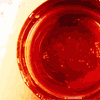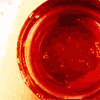On-Page SEO and Alt Text: SERP Ranking Influencer?

 The most important on-page ranking factors for placing competitively in search engine results pages (SERPs) include keyword use in the title tag, keywords in the domain (page names and folders too), keywords in the headline tags, within internal and external anchor text, within page copy, and yes ... keyword use in the alt text. While each of these factors is hotly contested in professional SEO circles, it's image alt text that has our attention today. You may be asking yourself, "What is this ... 2002 ... with the discussion of alt text?" And I might agree completely if it weren't for a recent spin I took on the SERPs of popular search engines like Google, Yahoo and Bing.
The most important on-page ranking factors for placing competitively in search engine results pages (SERPs) include keyword use in the title tag, keywords in the domain (page names and folders too), keywords in the headline tags, within internal and external anchor text, within page copy, and yes ... keyword use in the alt text. While each of these factors is hotly contested in professional SEO circles, it's image alt text that has our attention today. You may be asking yourself, "What is this ... 2002 ... with the discussion of alt text?" And I might agree completely if it weren't for a recent spin I took on the SERPs of popular search engines like Google, Yahoo and Bing.
Let's start by developing a definition of alt text. The alt attribute is used in HTML (and XHTML) documents to specify alternative text that is to be rendered when the element to which it is applied cannot be rendered. Over time, adding alternative text for images became a principle of Web accessibility. While alt text can be applied to media, applets or other non-text Web content (like entire areas of a Web page) the common understanding is alt text as related to images (and image optimization).
Why include alt text on images? While they do provide screen readers something to consume and aid those with visual disabilities, alt text provides a semantic meaning and description to images which can't be read by search engines. Did you get that? Search engines, despite being technological marvels of efficiency and productivity, are dumb and they need your help (the webmaster/SEO) to tell them what an image actually means. That presents an incredible opportunity to influence position on the SERPs from where I stand. Don't believe me - take a look at an example.
Today I searched for "Apple Cinnamon Oatmeal Bread" - after a good experience over the Labor Day weekend. I concede that the examples below are only one sample but the results encouraged me to rethink the use of naming images (as an on-page SEO tactic) that appear within content. More on that below.
Of the top five results on Google, three out of five returns named an image on the ranked page with the alt text (or some slightly modified derivation of it) with "Apple Cinnamon Oatmeal Bread": AllRecipes.com, AndreasRecipes.com, and ClosetCooking (on Blogger) all had alt text on their images. And the last one didn't even have any PageRank! RecipeZaar (which had an image but no alt text) and Cooks.com (its own search return list of related recipes) were the other two sites in the top five that were reviewed. Of the five final results on the first page, none had alt text.
Of the top five results on Yahoo!, three were identical to the top five on Google, but more importantly they (those with the alt text) were the ones that secured the first, second and third position. The next two results (position four and five respectively) did not have alt text on their images. Of the remaining listings, only one had alt text on its image.
Of the top five results on Bing, little had changed. AllRecipes and AndreasRecipes still topped the SERPs in the first and second position, but they were the only two of the top five that were using alt text. Consequently, of all the results that I encountered during this brief tour, Bing by far had the "spammiest" looking results.
So what's the final verdict on alt text? While I do believe there are other more important factors in determining position (as outlined above) on the search results page, using alt text should be an important part of your on-page SEO - if only to be in-line with accessibility best practices. In the end, adding another layer of meaning onto your visual content can't hurt and by the looks of it, might just influence position if only for long-tail terms.








